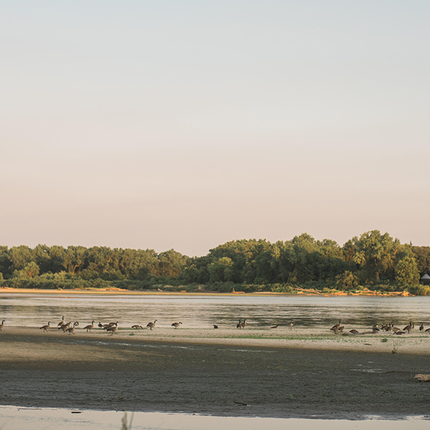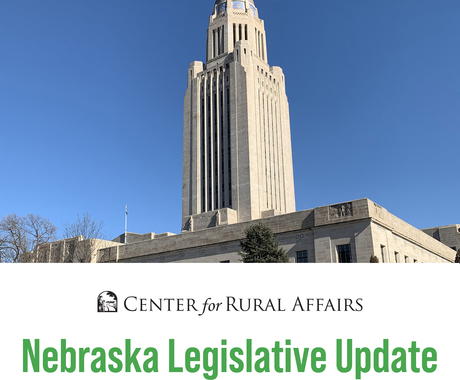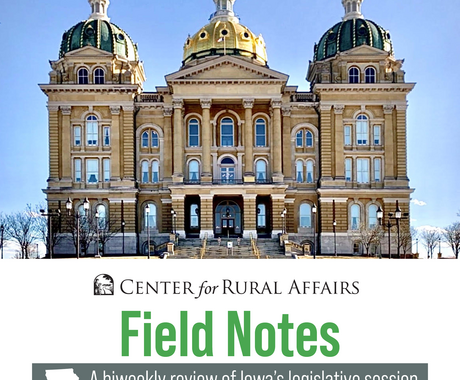By Katie Rock, former staff member
This blogpost is the second in our series looking at water quality in Iowa. Read our first entry looking into the upcoming 2018 legislative session here.
Iowa residents who care about water quality place a lot of pressure on their state legislators to make a difference for the long-term. In 2017, Iowa’s state budget delivered just $10.6 million dollars toward the Iowa Water Quality Initiative, an increase of $975,000 in a tight budget year.
However, a number of the largest efforts currently underway in the state are federally funded or started on a national level.
The largest investment in conservation comes from the U.S. Department of Agriculture’s Conservation Reserve Program (CRP) where Iowa has received more than $4 billion since 1995, including more than $336 million in 2015. Under CRP, farmers and landowners receive conservation payments to convert cropland to grassland over a specific length of time. Despite this large investment, water quality in Iowa has continued to decline.
The Nutrient Reduction Strategy started as a state level plan to address the growing dead zone in the Gulf of Mexico. Coordinated by the Environmental Protection Agency (EPA), the Mississippi River/Gulf of Mexico Watershed Nutrient task force convened in 1997 to examine root causes of the dead zone and engage 12 states within the Mississippi River basin for solutions. More than 20 years later, the dead zone continues to wax and wane, reaching its largest size to date in 2017, spanning more than 87,000 square miles, and is roughly the size of New Jersey.
Flooding that swamped eastern Iowa in 2008 resulted in a federal disaster declaration that, in turn, led to significant funding in flood mitigation projects across the state. The Iowa Legislature allocated $1.3 million to establish the Iowa Flood Center in spring 2009, and, less than a year later, drew $500,000 in research funding from the National Science Foundation. Housed at the University of Iowa, the Iowa Flood Center provides sophisticated technical analysis and modeling on flooding throughout the state through the Iowa Flood Information System. This system builds on a network of stream gauge monitoring by the Federal Emergency Management Agency and U.S. Geological Survey to provide a higher resolution of data for Iowa.
Iowa was included in the relief package passed by Congress in 2010 after Hurricane Sandy ravaged the eastern seaboard. Iowa received $97 million from the U.S. Department of Housing and Urban Development (HUD) for the Water Quality Initiative currently administered through state agencies in conjunction with the Iowa Flood Center. The money funds projects in nine targeted watersheds with the goal of retaining water on the landscape rather than in streams and rivers, reducing flows during heavy rain events. Such projects also improve water quality.
Another source of federal funding for water quality comes from EPA 319. This special fund within the EPA is for state and local efforts to restore and protect impaired waters with significant nonpoint source pollution. Funding is prioritized to bodies of water proven to be impaired and emphasizes a watershed approach. Without water quality data monitoring, Iowa cannot apply for this funding. Restorations underway for Easter Lake in Polk County and Clear Creek in east central Iowa are examples of projects funded by EPA 319.
The upcoming 2018 farm bill could present additional sources of federal funding for conservation and water quality projects.
A recently introduced bill from a bipartisan group of senators looks to expand 2014 farm bill “sodsaver” provisions from six midwestern states to nationwide. The sodsaver provision reduces crop insurance premiums by 50 percent on land where native sod has been plowed for planting crops.
Funding levels for Conservation Title programs such as the Environmental Quality Incentive Program and the Conservation Stewardship Program will be set in the next farm bill, along with requirements for the Conservation Reserve Program. All of these programs promote perennials on the landscape and working conservation lands which advance water quality.
Addressing water quality in Iowa will take a number of creative financing options, and federal programs already play a significant part. Underlying many of these efforts is an effective, tested framework to shape water quality at the watershed level, one watershed at a time.
Tune in for our next entry in this series looking at county and local sources of funding for water quality in Iowa.




